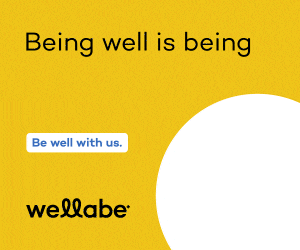A Closer Look: Tom Porter

.floatimg-left-hort { float:left; } .floatimg-left-caption-hort { float:left; margin-bottom:10px; width:300px; margin-right:10px; clear:left;} .floatimg-left-vert { float:left; margin-top:10px; margin-right:15px; width:200px;} .floatimg-left-caption-vert { float:left; margin-right:10px; margin-bottom:10px; font-size: 12px; width:200px;} .floatimg-right-hort { float:right; margin-top:10px; margin-left:10px; margin-bottom:10px; width: 300px;} .floatimg-right-caption-hort { float:left; margin-right:10px; margin-bottom:10px; width: 300px; font-size: 12px; } .floatimg-right-vert { float:right; margin-top:10px; margin-left:10px; margin-bottom:10px; width: 200px;} .floatimg-right-caption-vert { float:left; margin-right:10px; margin-bottom:10px; width: 200px; font-size: 12px; } .floatimgright-sidebar { float:right; margin-top:10px; margin-left:10px; margin-bottom:10px; width: 200px; border-top-style: double; border-top-color: black; border-bottom-style: double; border-bottom-color: black;} .floatimgright-sidebar p { line-height: 115%; text-indent: 10px; } .floatimgright-sidebar h4 { font-variant:small-caps; } .pullquote { float:right; margin-top:10px; margin-left:10px; margin-bottom:10px; width: 150px; background: url(http://www.dmbusinessdaily.com/DAILY/editorial/extras/closequote.gif) no-repeat bottom right !important ; line-height: 150%; font-size: 125%; border-top: 1px solid; border-bottom: 1px solid;} .floatvidleft { float:left; margin-bottom:10px; width:325px; margin-right:10px; clear:left;} .floatvidright { float:right; margin-bottom:10px; width:325px; margin-right:10px; clear:left;} Your book is titled “All I Need to Know About Business I Learned From a Duck.” Explain exactly what a reader will learn from this book.
First off, it would be that business people can actually learn how to improve how we manage and run businesses by just looking to nature as kind of a model. One thing that seems to be surprising to people, most people think of Darwin’s theory of evolution, and that basically is survival of the fittest. And the most recent studies that are coming out are saying that while there is a little bit of that that goes on, it is primarily cooperation between species that has kept things moving forward. When I was in the business, it was all about competition – you know, crush your competitor type of thing – and this book is more telling you to take a look at nature and really look at what is going on there.
So where in the world did the idea for this book come from?
My wife tells me not to say this, to tell the truth. I was writing another book and it became drudgery; it just became god-awful work. I finally said to myself, maybe I ought to be doing something else. I literally was out taking a walk on the bike path, and thought: OK, people that write nonfiction are supposed to write about things they know about. OK, I know about business, and I’m looking around and I’ve always been an outdoor guy, so I started thinking about nature. Maybe there is something here where I can use nature as a model for improving business practices. So I fiddled around with it, and lo and behold, in the book there are 88 business lessons from nature.
How did you feel when you were trying to get published?
It took me back to being a start-up again and recognizing that, hey, this isn’t easy. If it was, then everybody would be doing it. So it was just a matter of plugging away at publishing houses or agents or simply writing the book. What a lot of people say is in this whole process, the easiest part is writing the book. Then the tough part comes and that’s marketing the book.
What is one thing aspiring authors should know about the publishing process?
Don’t expect to make a lot of money on it. When you look at the way this whole industry is set up, the writer just barely makes anything. My book sells roughly for $18. You sell it through a bookstore, and you get 40 percent of that. If you do have an agent, the agent will take 10 percent. And you know there’s just not a lot of money left over.
How important was it to come up with a catchy title?
Your front cover and the title just have to be absolutely spectacular. You know when you look at the competition, most Barnes and Noble stores might have 80,000 books, so you have to have something that is going to stand out. “Business Lessons From Nature” – that was the working title that I had for the book. I went into Barnes and Noble, and I looked at the books, and I said, oh my God, I have to change this. This is not jumping off the shelf at all. And that’s when I went a totally different direction.
What kind of feeling was it to see the book out on the shelf?
I’ve done a lot of things in my life, and I’ve created national and international campaigns that won awards all over, but this for some reason was just so much different and it was just a real thrill.
So I have to ask, what exactly did you learn from a duck?
Well, that really forms the basis for the whole book. But there is a quote in there and the quote is, “People are like ducks, calm and unruffled on the surface but paddling like crazy underneath.” And my interpretation of that is that most people are insecure. Some people even have low self-esteem. And my experience in management has been that managers and supervisors take advantage of that rather than trying to mitigate that for employees. So it is intimidation rather than working with people as people and trying to bring them along. And that is really the point of difference, and that’s what I’m trying to say throughout the book. That the old ways of doing things, the intimidations, the keeping people on edge, all that sort of thing, there might have been a time when that would’ve worked, but not anymore.








